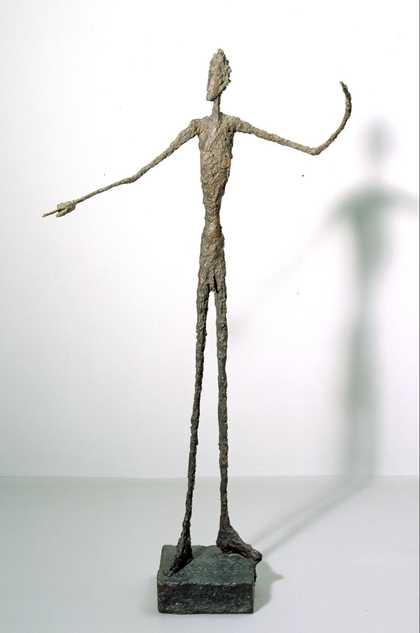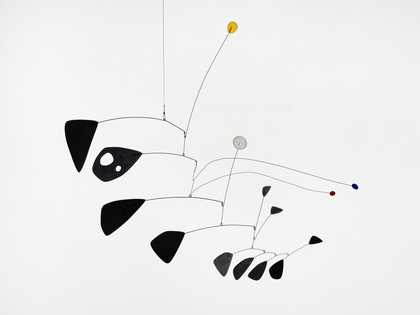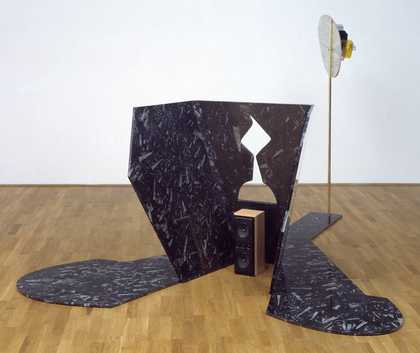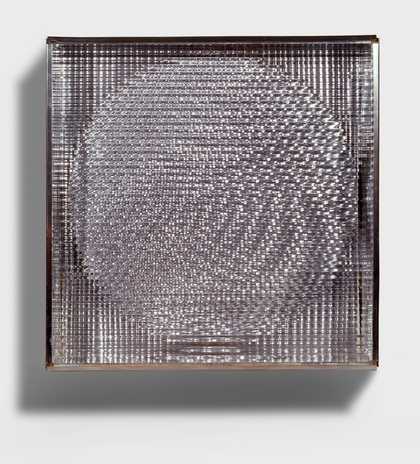Who is Takis?
Artist Takis made sculptures that combine science and technology with natural phenomena, ancient art and music.
By tapping into forces such as magnetic fields his art explores the mysterious energies of the universe.
Plato speaks of an artist turning the invisible world into the visible. I hope that someone seeing my sculpture is lifted out of his ordinary state.
Takis

Takis as a young man © Takis Foundation
Early influences and inspiration
Panagiotis ‘Takis’ Vassilakis was born in Athens in 1925.
His early life was lived in the shadow of the Second World War (in which he fought in the Greek Resistance) and the Greek Civil War (1946 – 1949).
Takis was intelligent and motivated, but his family did not have enough money to pay for his education. Describing himself as an ‘instinctive scholar’, Takis taught himself by reading about science, philosophy, poetry, mythology and the arts.
Takis decided to become an artist when he saw sculptures by Pablo Picasso and Alberto Giacometti. He was also inspired by the Ancient Greek sculptures that he saw around him in Athens.
He began experimenting with plaster, making figures with elongated forms reminiscent of Giacometti’s sculptures.

Takis, The Four Soldiers 1952 © Courtesy Takis Foundation
1950s Paris
In 1954 Takis moved to Paris to pursue an artistic career.
In Paris he taught himself how to forge, weld and cast metal, creating small sculptures inspired by the forms of early Greek Cycladic and Egyptian art.

Marble figure of a woman, Cyclades, Greece 2500 BC-2300 BC © Trustees of the British Museum

Takis, Plaster Figure 1954-1955 © Takis
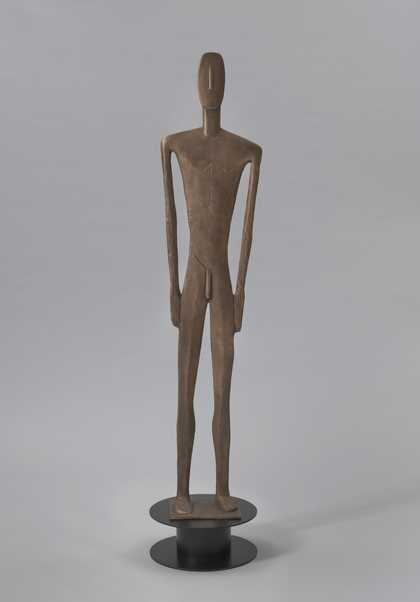
Takis, Bronze Figure, 1954-1955, cast 2009 © Takis
As well as exploring new techniques and materials, Takis’s ideas about sculpture also began to change.
In Paris he met avant-garde artists including Yves Klein and Jean Tinguely who were experimenting with kinetic sculpture (sculpture that moves) and performance.
He also connected with American Beat writers and poets whose social views and questioning of mainstream culture meshed with his own radical approach to life and art.
Science and technology
I cannot think of my work as entirely my work. In a sense, I’m only a transmitter, I simply bathe in energy.
Takis
It was not only the atmosphere of experimentation in the arts that inspired Takis. The 1950s also saw important developments in science and technology.
In the 1950s astronomers began to explore the possibilities of using radar to observe outer space. And in 1957, Sputnik 1 – the first artificial satellite – was launched in to space, an event generally seen as marking the start of the Space Age. This was followed in 1961 by the launch of the first man, Yuri Gagarin, into space.
These scientific developments and potential to explore and observe the forces of the universe had a huge impact on Takis.
Signals, magnets and sound

Takis, Signal 'Insect-Animal of Space' 1956 © Takis
Signals
In 1957 Takis had a light-bulb moment (quite literally!) while waiting at a train station.
The energy and movement of the flashing lights around the station inspired him to create antenna-like sculptures called Signals.
Made from long thin rods, the sculptures vibrate and bend with the movement of air around them. Like radar transmitters, Takis saw his Signals as capturing the energy of the air or sky.
Magnetic energy
In 1958 Takis began to experiment with magnets and magnetic energy in his sculpture.
He had been searching for a way to show the unseen forces of nature and the cosmos. The push and pull effect that magnets can have on metalic objects offered a way to do this.
Takis saw the potential to create a new kind of sculptural space using magnetic energy fields.

Takis, Magnetic Ballet 1961 © Takis

Takis, Magnetic Ballet 1961 © Takis

Takis, Magnetic Ballet 1961 © Takis
In 1959 he exhibited his first magnetic sculptures at the Galerie Iris Clert in Paris. Metal objects tied to a nylon thread were made to hover in space using magnets.
In 1960 Takis went one step further with The Impossible, A Man in Space. He floated South African Beat poet Sinclair Beiles mid-air in the gallery using a system of magnets. Appearing to defy gravity, Beiles read one of his poems titled Magnetic Manifesto while suspended.

Takis, Electro-Magnetic Musical 1966 © Takis
Cosmic sounds
As well as using magnetic energy to float objects in space, Takis used magnets to generate resonant sounds.
His installation Electro-Magnetic Musical 1966 consists of a white panel with a guitar string stretched across its width and a large needle suspended in front of it.
The musical string is are attached to an amplifier and an electro magnet is concealed behind each panel.
The magnets attract and repel the needles so they strike or grate against the string, creating vibrations that are amplified and played through speakers placed at the top of the panels.
Together the sounds form a mysterious and serene humming music. Takis suggests that it is the sound of the natural forces of the cosmos.
The element of chance involved in the rhythms and sounds produced by magnets link Takis’s audio experiments with those of composer John Cage. Takis exchanged ideas with Cage in the 1960s and shared with him an interest in Zen philosophy and mythology.
Sound is one of those key elements of energy. It’s an invisible force that Takis makes present using a number of different devices.
Michael Wellen, Curator, International Art, Tate
Redefining sculpture
Takis saw sculpture as ‘following the indications of the matter’. Rather than molding or working a material into something, he shows us what is already there.
In his art he aimed to reveal invisible energies, such as magnetism and gravity, that make our existence possible.
His sculpture brings together art, science and nature and enhances our awareness, understanding and appreciation of what is around us.

